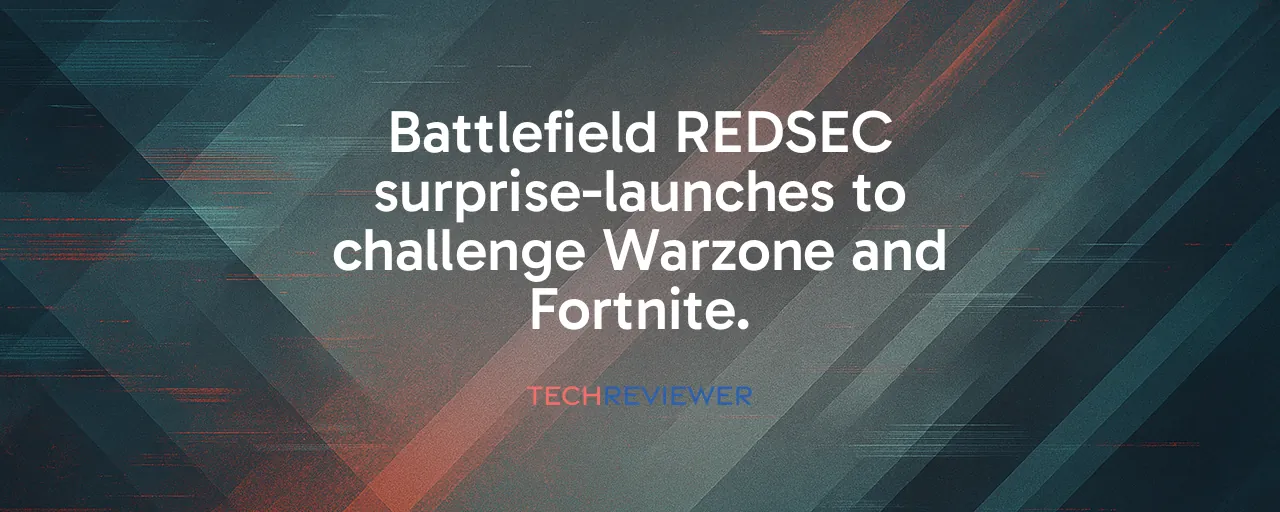A Surprise Drop That Caught Everyone Off Guard
When Electronic Arts announced Battlefield REDSEC mere hours before its October 28, 2025, launch, the gaming world froze. Datamine leaks had been swirling for weeks, with fans piecing together clues about a project codenamed Granite. EA, backed into a corner, opted for a shadowdrop, a risky move that mirrors Call of Duty Warzone’s 2020 surprise launch. This wasn’t just a reaction to leaks; it was a calculated play to steal attention in a crowded battle royale market valued at $14.8 billion in 2025. With Battlefield 6 already selling seven million copies in three days, EA saw a chance to ride that wave and challenge giants like Warzone and Fortnite.
The timing feels almost too perfect. Dropping REDSEC alongside Battlefield 6’s Season 1 content creates a one-two punch, keeping players hooked across the franchise. Byron Beede, the former Warzone mastermind now steering REDSEC, knows how to make a splash. His experience with Warzone’s free-to-play rollout shaped this launch, aiming to pull in both Battlefield veterans and curious newcomers. But pulling off a shadowdrop in 2025, when players expect months of hype, takes guts. Will it pay off, or will REDSEC fade like its predecessor, Firestorm?
Learning From Firestorm’s Fall
Battlefield’s first stab at battle royale, Firestorm, launched in 2019 as a mode tied to Battlefield V. It tanked fast. Locked behind a $60 purchase, it pushed away players who didn’t want to buy the full game. Clunky looting systems, where dead players dropped piles of gear, frustrated squads. The absence of respawn mechanics meant one death could leave you spectating for ages. By late 2019, a poorly received patch made enemies absurdly tough to kill, and hackers ran rampant as developer DICE shifted focus elsewhere. Within months, Firestorm’s lobbies were ghost towns.
REDSEC takes a different path. It’s free-to-play, removing the entry barrier that doomed Firestorm. The looting system is streamlined, with five weapon tiers and limited attachments to keep things snappy. Respawn mechanics, like support class revives and earned redeploy chances, keep squads together. EA’s Battlefield Studios, a collective of DICE, Ripple Effect, Motive, and Criterion, leaned on extensive playtesting through the Battlefield Labs program launched in February 2025. Thousands of players stress-tested mechanics, from weapon balance to map flow, ensuring REDSEC avoids Firestorm’s pitfalls. But the real test is whether these fixes can win over a skeptical fanbase.
New Mechanics That Demand Attention
REDSEC isn’t content to mimic its rivals. Its instant-death circle, which kills players on contact rather than draining health slowly, forces constant movement. Approach within 10 meters, and visual warnings flash, giving you seconds to react. Some players love the high-stakes intensity, praising how it punishes camping. Others, especially casual players, worry it’s too unforgiving, especially on a new map designed specifically for 100-player matches split into squads of two or four. The map’s diverse locations, built from scratch for battle royale, promise dynamic fights, but the learning curve could alienate newcomers.
Then there’s Tactical Destruction, a standout feature. Buildings collapse in predictable ways when damaged, letting players block paths or open sightlines strategically. Imagine blasting a wall to trap enemies or crumbling a rooftop to expose snipers. Add in vehicles, from basic transports to armored beasts earned through mid-match missions, and REDSEC feels like classic Battlefield chaos transplanted into battle royale. Class-based squads, with roles like assault or support unlocking unique traits, keep teamwork central. These innovations aim to carve a niche in a genre dominated by Fortnite and Warzone.
Warzone vs. REDSEC: A Head-to-Head Fight
Call of Duty Warzone set the gold standard for free-to-play battle royale in 2020, launching with 150-player matches, a Gulag respawn system, and tight integration with Modern Warfare. Its shadowdrop generated massive buzz, peaking at nearly 500,000 concurrent Steam players in 2022. By 2025, though, Warzone’s PC numbers have dipped to 25,000–100,000 daily, with console players still driving huge engagement. REDSEC, with its 100-player cap and focus on squad-based tactics, doesn’t try to outscale Warzone. Instead, it leans on Battlefield’s strengths: destructible environments, vehicle warfare, and class synergy.
Warzone’s Gulag gives players a second chance through one-on-one duels, a forgiving system REDSEC counters with earned redeploys and support class revives. Warzone’s gradual damage zones let players linger on the map’s edge; REDSEC’s instant-death circle demands precision. Warzone thrives on constant updates, but REDSEC’s playtesting through Battlefield Labs suggests EA is committed to iterative tweaks. However, Warzone’s existing monthly active user base will likely far exceed REDSEC’s initial numbers. EA must deliver consistent content to keep players from drifting back to Activision’s juggernaut.
Can REDSEC Sustain the Hype?
The battle royale market, projected to hit $32 billion by 2034, is a tough arena. Fortnite’s cultural dominance and Warzone’s loyal base make new entries risky. REDSEC’s free-to-play model, backed by Battlefield 6’s $490 million launch revenue, gives it a fighting chance. But sustainability hinges on execution. Players burned by Firestorm’s abandonment want assurances EA won’t pull the plug if REDSEC stumbles. Monetization is another hurdle. While EA hasn’t detailed its plans, the industry standard—cosmetics, battle passes, and optional content—must balance profit with fairness to avoid pay-to-win backlash.
Server stability and anti-cheat systems are non-negotiable. Firestorm’s hacker issues and empty lobbies left a sour taste, and REDSEC’s 100-player matches with destruction physics demand robust infrastructure. Cross-platform play, uniting PC, PlayStation 5, and Xbox Series players, could broaden its appeal, but EA hasn’t confirmed details. If REDSEC nails its launch and keeps content flowing, it could chip away at Warzone’s dominance. If it falters, it risks joining the graveyard of failed battle royale experiments. For now, the gaming world is watching, ready to jump in or move on.
